




Here are pictures of the transformation actors Eva Melander and Eero Milonoff went through for the motion picture Border.



Here's my absolute first test makeup of the final Border makeup design on Eva Melander. I kind of prefer these thin eyebrows to what we ended up with in the film. Not sure now why we decided to change them?



Close up of actor Eva Melander as the lead character Tina from the Swedish film "Border". Make-up Applied by Pamela Goldammer and Pierre Olivier Persin. Wig by Sara Lycke.

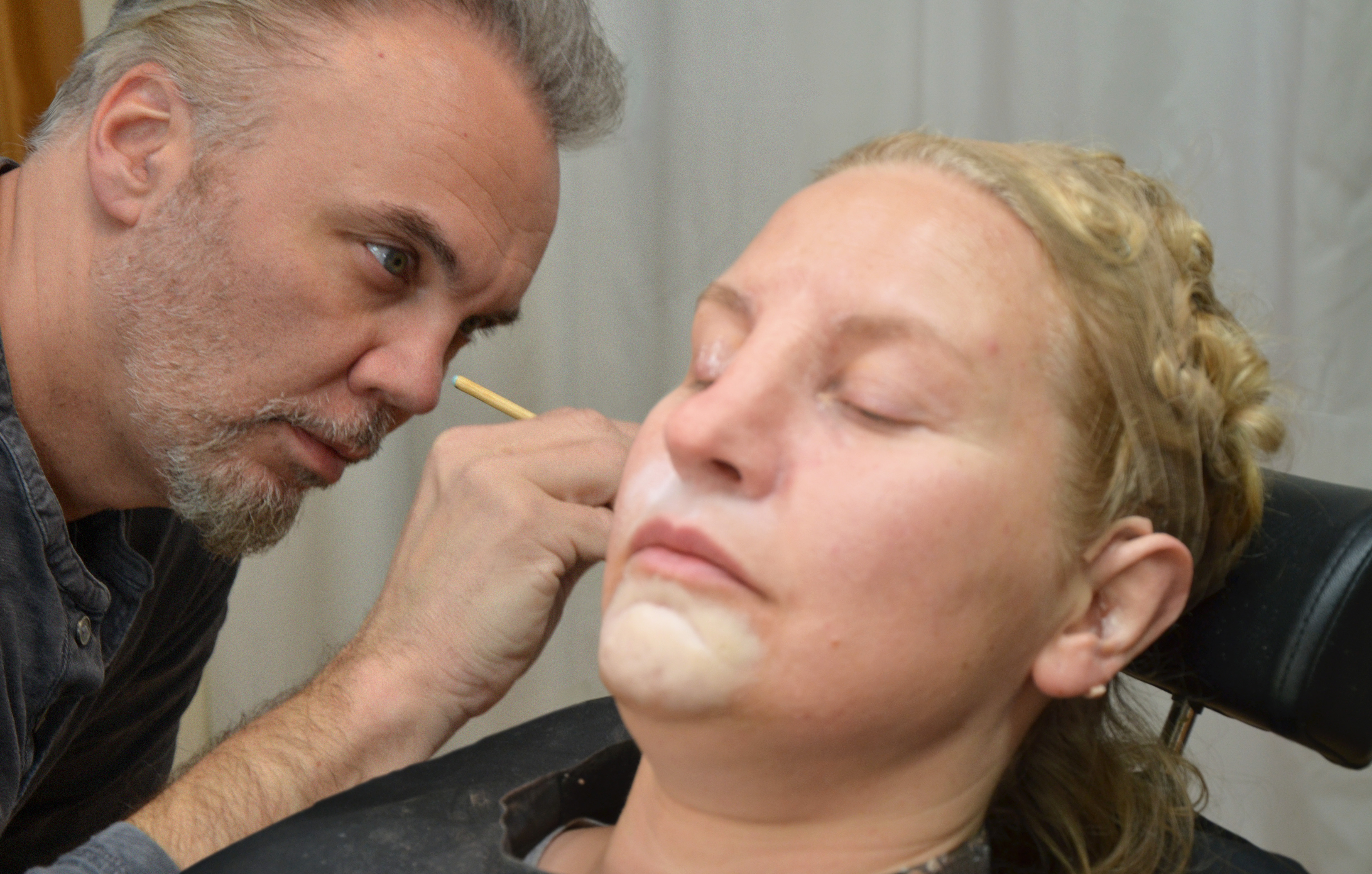


Realist troll makeup, not CGI, in 'Gräns' / 'Border' (Ali Abbasi, Meta Spark & Kärnfilm, 2018).
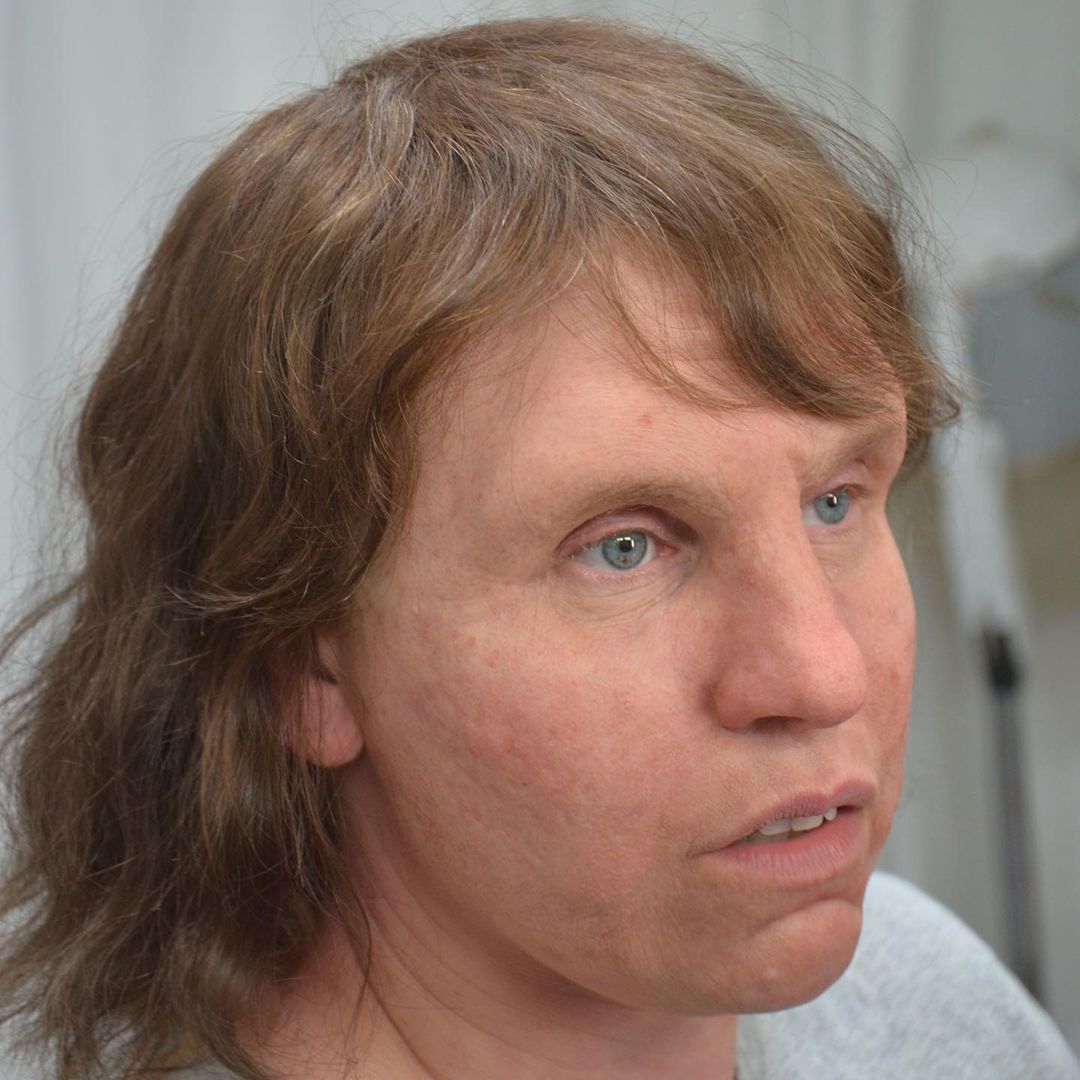

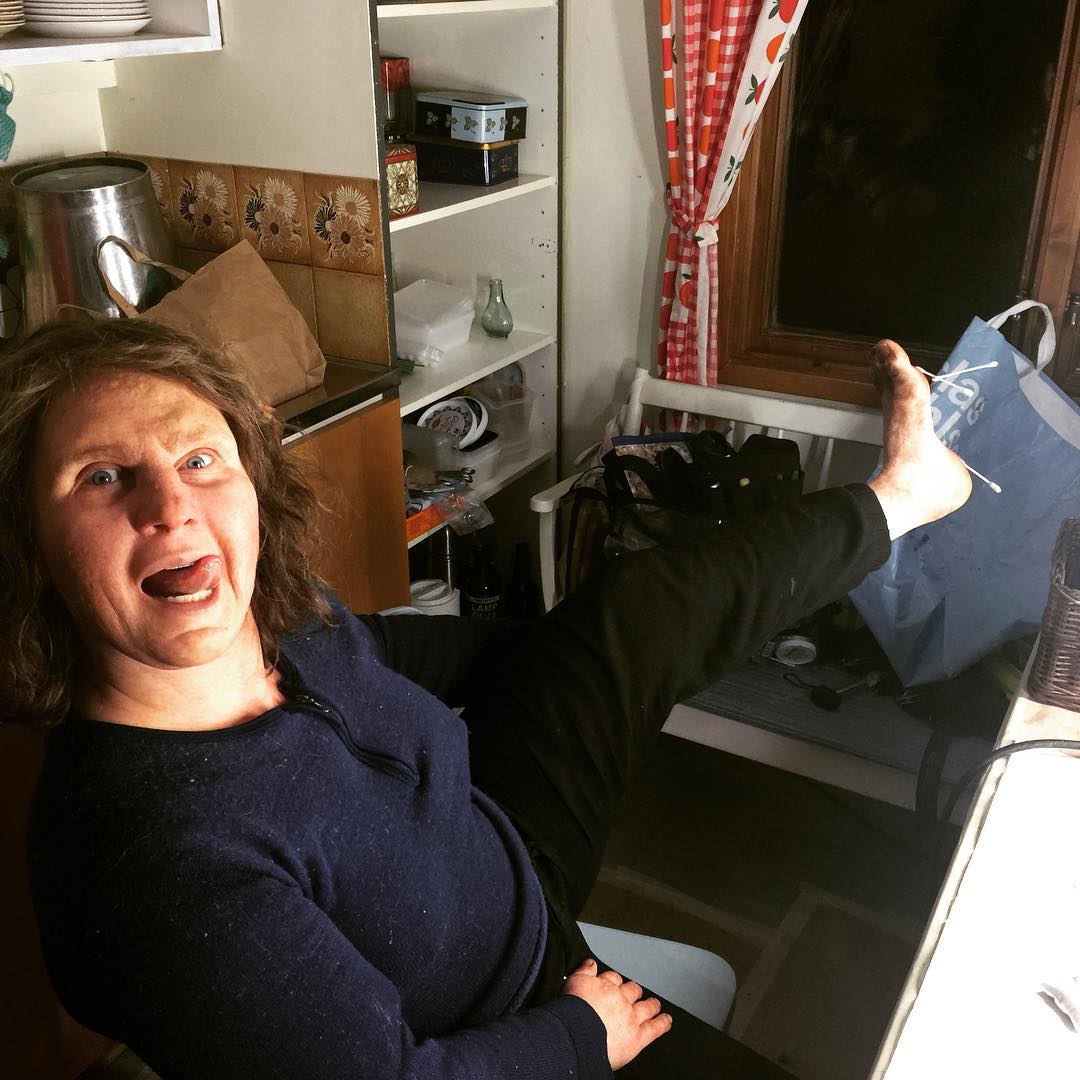
Göran Lundström
I want to thank the crew who made our work on the motion picture "Border" possible.
Åsa Sjölin, Robin Alderskans, Anders Bratås, Cristina Malilos, Thomas Foldberg, Floris Schuller, Natalia Aguilar, Oskar Wallroth, Hara Vasiliadi, Daniel Carrasco, Sara Lycke and Johanna Ruben.
And a big thanks to the on-set crew - Pierre Olivier Persin, Inga Ross, Rogier Samuels and Heléna Olsson.
Make-up, prosthetics and hair design: Göran Lundström On-set prosthetic key artist/ supervisor: Pamela Goldammer
Pierre Olivier Persin
I had the chance to work last year on the Swedish movie Border (Gräns), applying this makeup throughout the shoot alongside the very talented Pam Goldammer, on the amazing Eva Melander. The makeup was beautifully designed and sculpted by Göran Lundström and his Effektstudion Efx.
I also had the pleasure to work on that movie with very talented friends, like Rogier Samuels, Morten Jacobsen, Inga Ross. Miss you guys!
When job one is making humans look like trolls — or was it making trolls look human?
By Cristy Lytal, Los Angeles Times / Jan 10, 2019 at 10:30 am
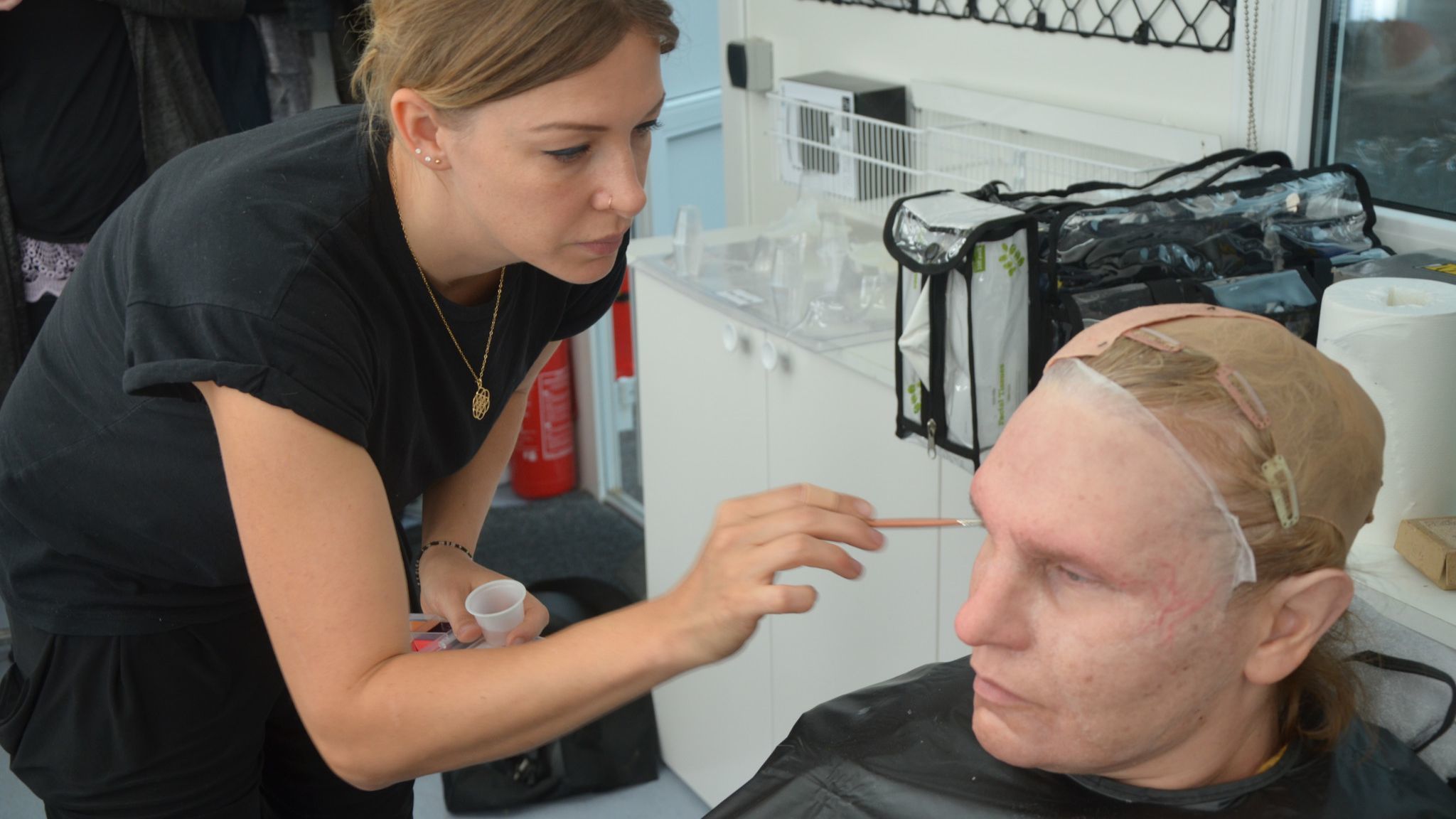
A behind the scenes photo of actor Eva Melander, right, from the film "Border." (Ali Abbasi/Still 21/Niklas Hermansson/Goran Lundstrom/Morten Jacobsen/Meta Film/Spark Film & TV/ Kornfilm)
In the Swedish film “Border,” trolls don’t lurk under bridges or in magical kingdoms but pass as humans in our everyday world. For makeup and hairstyling team Göran Lundström and Pamela Goldammer, this nexus between fantasy and reality presented an intriguing challenge.
“That’s a unique aspect of this,” said Lundström, who crafted the prosthetics that Goldammer applied to lead actors Eva Melander and Eero Milonoff on set. Each actor’s transformation required three hours in the makeup chair.
“What fascinated me the most was the combination of a fantasy creature and a real person,” said Goldammer.
Melandar stars as Tina, a talented border guard who can literally smell the guilt of smugglers. Her nose never fails her—until confronted by a strange yet familiar man named Vore (Milonoff), who reveals her true nature.
Did you have visual inspirations for your trolls?
Lundström: I found this British actor called Eddie Marsan, who’s got a really interesting face. I did [a test makeup] where I basically took a lot of features from Marsan and put it on Eva. And then I decided that I wanted to change the nose, because it didn’t really fit her face; it changed her face too much into someone else. So I brought the nose back to her length and just made a different type of nose. But the chin is based on Eero’s chin, I wanted to bring something from him onto her.
How did you make the actors look distinct as individuals, yet of the same “species”?
Lundström: Eva and Eero have completely different proportions, so you don’t really have to be that worried about getting them to look too similar. But what I did was I made sure they had different noses, for sure. And also, Eva’s features are much softer. And with Eero, he’s a much more sinister character in general, so we could take him a little bit further. And I noticed that he actually used the sculpted features and made them even more exaggerated.

A photograph of several silicone molds used in the makeup for the movie "Border." (Still 21/Meta Film/Spark Film & TV/ Kornfilm)
Goldammer: I wonder if he really spent time in the mirror working out different expressions. Because in the beginning, when I was applying the makeup on my own, Eero had to be done either before Eva, and then wait for the next three hours in this makeup, or we would apply the prosthetics on him, then we’d do Eva [and Eero would have to finish his process after that]. So then either way, he had three hours [to wait with his makeup at least partially on] where he would then go back in the hotel room or in his apartment, and he would just hang out. So I’m really curious because the moment his makeup and the paint was finished, he’d just get up and he would have changed his expression, have this cheeky twinkle in his eyes. It was really fantastic, and it was very creepy at times.
Did you do anything with their teeth?
Lundström: Both of them had dentures. [Director Ali Abbasi] wanted them to be asymmetrical in general. So Eva’s eyelids are a little bit different. She has a little bit thicker eyelid on one side, so she looks a little bit asymmetrical in her eyes. But for her mouth, I sculpted the teeth in a way so if they closed their mouths, it wouldn’t be a straight mouth anymore. It would be crooked.
What’s your technical process for crafting prosthetics?
Lundström: So basically, I have to do a face cast of the person first. And we did that in silicone. We sculpt on a positive copy of that face cast in an oil-based clay that we use. She’s got nine different pieces. Once it’s sculpted, we make molds and we cast silicone pieces out of the molds; most of it was silicone, but we also did some gelatin pieces for it, because it just behaves differently. There’s a crinkling effect you can get with silicone, where you get little wrinkles that are really annoying. So that’s why I went back to gelatin.
Are there any drawbacks to using gelatin?
Lundström: Well, in this case, we have the cold, because gelatin gets really stiff.
Goldammer: Most of the time we were outside, and it was cold at that time of the year. And there was one scene where they are swimming in the water together. So for these days, I asked Göran to make some silicone prosthetics. They look exactly the same, but they just don’t react to water. Or when we were outside for the sex scene where they were very little dressed, and it was a very cold day, you could feel how the gelatin got just a bit tougher. And I placed hand warmers on the cheeks, and it was just enough to bring them back. We didn’t have any problems. But I mean, for them, it was a pretty tough shoot, because they had to be in very cold water, running naked through a forest, shooting outside in very little clothes.
출처 : https://www.chicagotribune.com/la-en-mn-craft-border-makeup-20190109-story.html
When job one is making humans look like trolls — or was it making trolls look human?
Makeup artists had to create human-looking trolls, a three-hour process, for the Swedish film "Borders."
www.chicagotribune.com


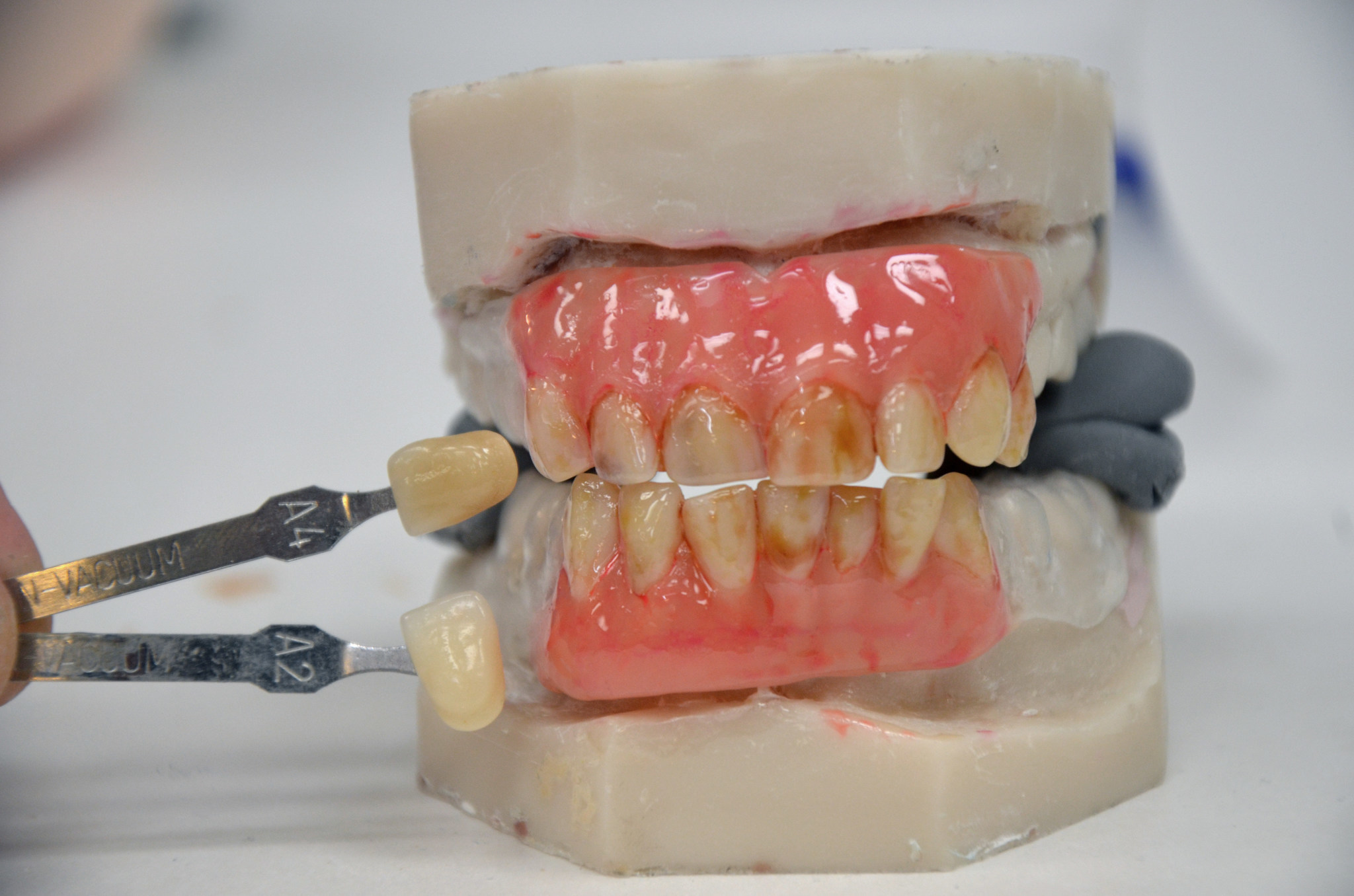

With Little Money & Even Less Time, ‘Border’ Makeup Designers Transform European Talents Into Trolls
By Matt Grobar / December 4, 2018 12:01pm
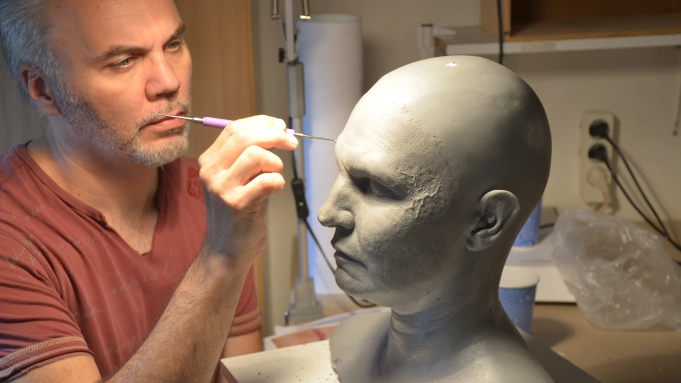
Called upon to design makeup for Ali Abbasi’s Border—a singularly dark and clever fantasy, which won Cannes’ Un Certain Regard prize and has been selected as Sweden’s entry for Best Foreign Language Film—Göran Lundström would do some of the most transformative work he’d ever done, turning two European talents into trolls.
Demonstrating the highest degree of artistic commitment, Eva Melander put on weight and lost herself inside of many prosthetic pieces to become Tina, a customs officer who can smell fear. Developing an attraction to a mysterious traveler (Eero Milonoff’s Vore), Tina helps the police come to a series of disturbing discoveries, questioning her own identity, and life as she knows it, along the way.
Known for his work on Beauty and the Beast, Cloud Atlas, the Harry Potter series and more, Lundström was well acquainted with the challenges that come with film production in his home country. In Sweden, time and money are always problematic factors, but in the case of Border, the designer was more concerned with the challenge of transformation—taking his actors far away from their own features, without distracting the film’s audience. “That’s hard, whatever the look. The technical challenge was something I didn’t even think about at the beginning, because I didn’t even think it was going to go this big,” Lundström admits. “It was something that progressed with talking to Ali, where maybe, we could do more, more, more.”
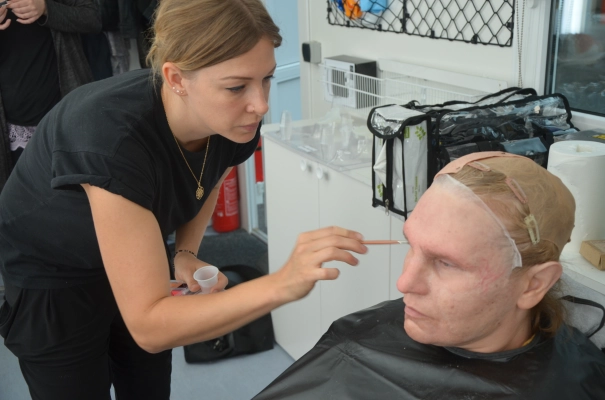
Called away to work on National Geographic’s Genius while Border was in production, Lundström recruited a regular collaborator, Pamela Goldammer, to handle the day-to-day rigors of makeup application. “We got the time down as much as [possible]; literally, every move was prepped. I had all my product in the same space, and everything was so prepared that I wouldn’t waste a second looking for something,” she explains, of the discipline the job required.
The other principal hurdle, for Goldammer, was having one actress who featured in every single scene, on a set where there was precious little time for “fixing up” between takes, and even ‘Last Looks’ could be cut for time. “Of course, I would then go the moment she would be on the side, and I could work on her. Thank God, we had a really great relationship,” the makeup artist says. “She would allow me into her space in any free moment; it was tough on her, but she was such a trooper.”
In recent years, it’s been interesting to watch Sweden factor in repeatedly at the Oscars—most notably, in the category of Makeup and Hairstyling, with films like The Hundred-Year-Old Man Who Climbed Out of the Window and Disappeared, and A Man Called Ove. “It’s kind of weird, how it’s changed. Because I’ve been doing this for 25 years; I’ve worked internationally a lot, and now in the last few years, it’s just kind of happened,” Lundström reflects. “Maybe the films they make now are different, because this would never have happened 10 years ago, I don’t think.”
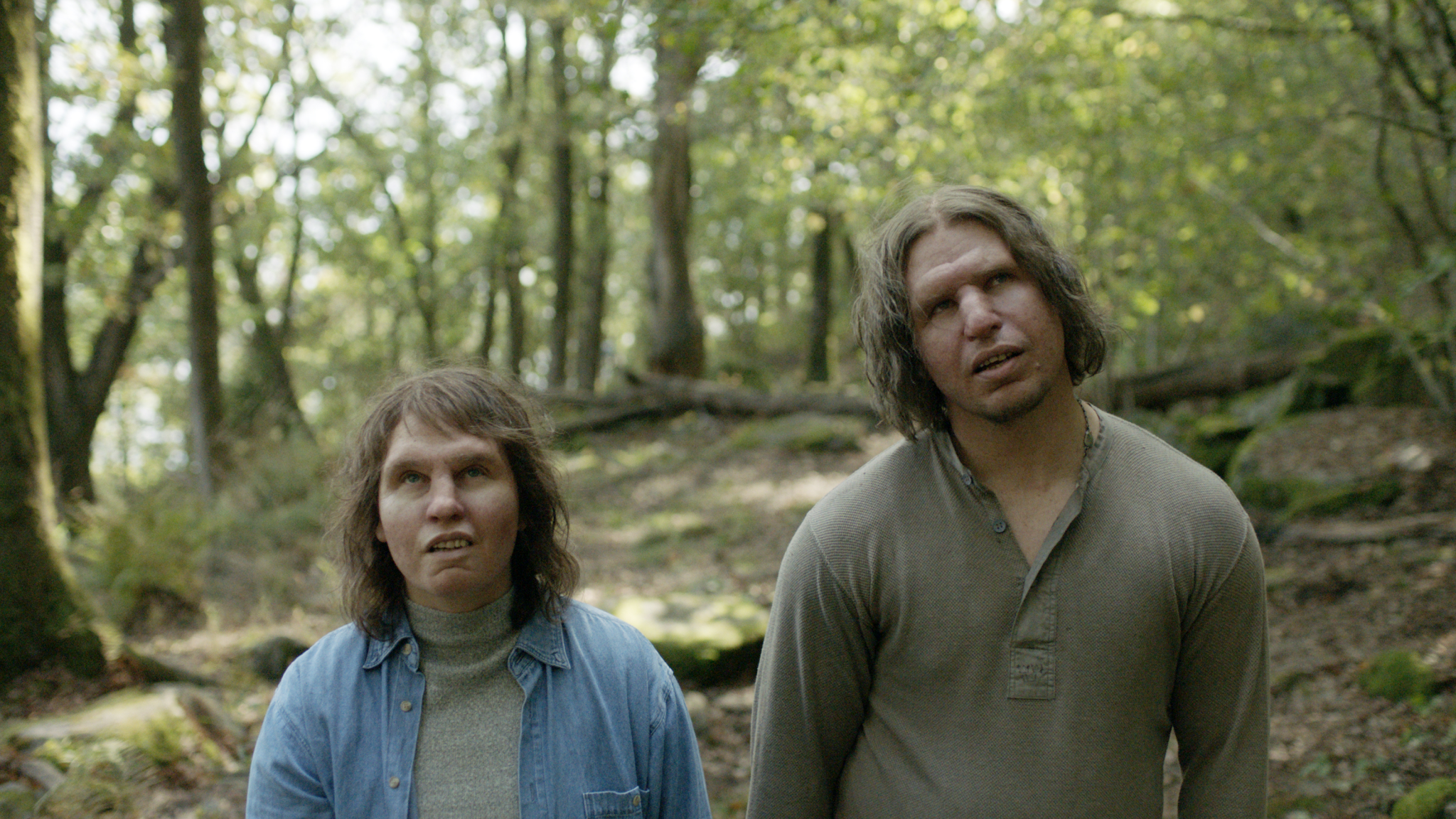
Göran, how did you come to work on Border? What was it about this project that compelled you?
Göran Lundström: They contacted me last year in the middle of summer, just when I’d started my vacation, of course. I don’t know what happened before they contacted me, but we only had two months before shooting, which is really short for something like this—and they told me whatever makeup we do could only take an hour. With an hour, we couldn’t do what we actually did. So it was like, “Okay, they need to be trolls. Maybe I can do a forehead in an hour, and stick a wig on.” Then, as soon as I started talking to the director, I realized that he didn’t really want to stick to that one-hour rule. He just wanted to be completely free in creating whatever he wanted, and it’s just that he didn’t really have a clear idea of what he wanted. I was trying to get it out of him: What are you seeing? Because trolls can look so many different ways. We didn’t want them to look like fairy tale trolls; we wanted them to look like some kind of race that functions in our society.
It was a strange journey, trying to get somewhere with Ali, because he’d never done this before. I think his way of working, visually, is to see it, and then he’ll know what he wants, but I needed to know where to start. I did a lot of back and forth with him to realize in the end that I needed to make something up to show him, because he couldn’t give me a description of what he wanted. But then also, we had these two actors that looked very different; Eero has a very interesting face, and Eva’s got a very Swedish, plain face, I think. So, she didn’t have much to go from, but he did. I had to see what I could do to make them look in the same realm.
When I came back from vacation, I had five weeks from the day I could cast them until we’d have to start shooting, and they agreed to do a complete test makeup that would be scrapped, which never happens in Sweden. They never pay for that. It’s quite a lot of money to do one to look at and go, “Oh yeah, we like this; we don’t like this.” We did a quick one in like a week and a half, and I based it basically on one drawing that Ali showed me, a sketch that he had from way back. I recognized that they were trying to take a famous Neanderthal painting that they had done a drawing of [and apply that look to Eva’s] face, and I was like, “No, that’s not going to work. It’s too much.” But at least I knew that he was going ugly; he wanted to go more manly, not very feminine, and also, [the principal characters] have different sexes in the film. With [Tina], we didn’t have to work much on her being pretty and female; I was basically trying to think about what I could do to make her look more grotesque, without standing out too much.
I was trying to find faces that I liked that would do something for Eva’s very pretty face, and there’s an actor called Eddie Marsan—he’s got a really interesting face, but if you look at him and Eva, there’s similarities, like his lazy eyes and his quite protruding forehead. He’s got a longer nose, but he’s got round cheeks, and I figured if I could use a real person, and use it on her face, it would look more real. When you’re creating stuff, you tend to go with what looks cool instead of looking real. It’s very easy for us to fall into that trap, especially with sculpting. So, I used that as a reference, and tried to stay away from making her too anything, really. Once Ali saw this, he added the pockmarked skin. He wanted a monobrow, but I was like, “No, that’s too much.” It very quickly is too much if you start adding these cliché things on top. I realized he wanted to go maybe a bit more ugly, and I felt that my job became about not making it too much—trying to keep a balance, in the end.
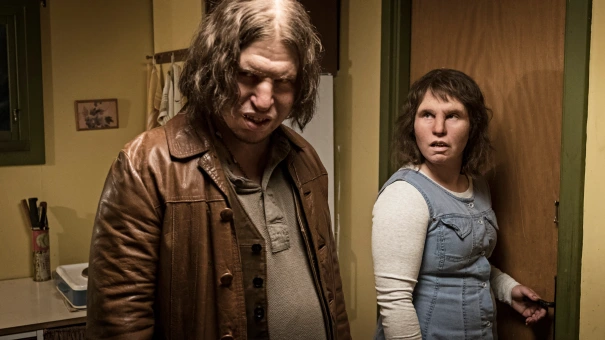
Pamela, at what stage did you come on board?
Pamela Goldammer: When I got involved, I saw just the design of Eva, with the test makeup, and I was like, “’Yeah, this is really nice.” Production still had just one hour [for prosthetics]; at this point, they still didn’t realize that this was a three-and-a-half-hour makeup. They would give me a maximum of two-and-a-half hours, which was almost physically impossible. Then, I was doing the second test makeup, and Ali didn’t like the hair anymore, as it had been discussed; he wanted it to be longer.
At this point, it was the evening before [the shoot], it was really late, and the only chance to make this work was to use Eva’s own hair. So, I used the bottom of her hair and dyed it in a color to match the wig; it was a totally different style than her own hair, so on the top of her head, she was blonde and curly with longer hair, and underneath, she was dark and shorter—which worked really well for the character, especially because the wig was supposed to be thin and matte and not very feminine. We were even trying to see the skin through the hair on top, and have everything cut wispy around the front. Using her own hair underneath helped a lot with that really stiff wig because whenever she was turning her head or looking down, you didn’t have the hair sticking out. You had her own hair, and I thinned it a little bit, too.
After this test makeup, I found out that there was also another guy who has a makeup, Eero, and he was going to be on [set] some days when I was applying makeup on my own. So then I was like, “Okay, this is a big thing. Two full-face prosthetic makeups. All right.” It was fine, except that after all these hours of application, we then went on set to actually start the filming day, so the days just became really, really long. In the middle of filming is when Ali came back with that monobrow idea—he wanted the character to become more animalistic, as she becomes more familiar with her own instincts and her troll self. I didn’t go for a super solid monobrow, but we did lots of different things, and everything was sent to Göran to have it confirmed. We went for the slight monobrow, we had some fake nails and some slight facial hair, and the wig changed as she progressed within the story.
Could you break down your two principal looks further, in terms of the characteristics you pursued and the kinds of prosthetic pieces involved?
Lundström: What I tried to achieve, besides just trying to find a face I liked, was to try and get Eva more animalistic, so I made the nose a little bit wider, at an angle that humans don’t have, but animals have, and also pointier ears. She has a forehead where we punched the eyebrows in; on each piece, there’s a new set of eyebrows that’s punched in hair by hair, and then she had a nose piece, two eyelids, two cheeks, two ears, and a chin.
Goldammer: At some point, there were supposed to be contact lenses too.
Lundström: I had this idea of doing slightly bigger irises, to work myself away from humans, but not make it obvious enough so it looks strange. We tried them on, and it was interesting; she looked different, but you couldn’t pinpoint it. But we had such a short amount of time to get them to work on her, and we didn’t have time to do all the test fittings. We got them in and they looked beautiful, but they weren’t staying where they were supposed to go.
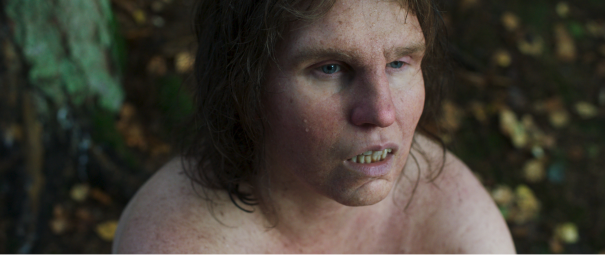
Goldammer: I think it’s better without them, because the contact lenses made them move away from being believable as characters that can function, or just move amongst people. It was also good because if they were in every scene, it would’ve been a big additional stress.
Lundström: They had dentures, as well—upper and lower ones, where they had their upper lip uncovered.
Goldammer: And [the actors] were practicing with them a lot. They sometimes took them home in the evening, but definitely on the weekend, just to get used to it, so as to not have a lisp. But I also just wanted to say about the hair of Eero—because they look similar, in a way, with similar colors and lengths—it was the idea of Ali to have hair falling into his face, and intensify his sinister look.
Lundström: Our whole design on him is a bit more sinister because he’s supposed to be more evil. She’s supposed to play this whole range, but when he comes in, it’s a little bit more strong.
Further complicating matters with Border is that you’re dealing with varying degrees of troll nudity.
Goldammer: Sometimes, we saw just the upper body, and sometimes we saw them fully. There wasn’t really talk about seeing Vore fully naked, so there was nothing prepared for that. We had meetings every Tuesday at lunch, and it was always in that one meeting that these things would come up. So suddenly, it came up, and I was making almost like a thong—latex with hair to cover him. Then, she was fully naked; she had body hair [made by] Morten Jacobsen, and he put nipples on him. Also, Vore has this scar on his shoulder. They had to run fully naked, and it was always very cold.
It must have been particularly challenging for everyone involved, when Tina and Vore decided to go for a swim.
Goldammer: It was, and we just had to time it really well, because there was not really a schedule that would allow for any resets.
Lundström: The cheeks and the chin on her were gelatin, and the rest is silicone—and gelatin doesn’t necessarily hold up that well in water. So on those days, we had everything in silicone.
In 2018, gelatin is no longer a go-to artist for most makeup designers. Why did it become essential with Border?
Lundström: Gelatin had been used for years and years before silicone was developed properly, and then for the last 15 years, silicone has been the main material we use.But it has its problems, with females especially; with delicate skin, you get these little wrinkles I don’t like. I did the first season of Genius six months before, and I felt like there was no way around it. I couldn’t find a way to get away from those wrinkles, especially around the mouth. It’s really hard because you have big, stretchy skin movements, and things just happen.
Really late in the process, I went, “No, I’m going to use a gelatin chin,” but I had to find a way for Pamela to [apply it], because I didn’t really know how much gelatin she’d done. It’s a slightly different application process, so I developed a technique where it looked very similar to a silicone piece and the way you apply it. It also helped with protecting the edges, when you lay it down and glue it down. And the first time I tried it, it worked.
Goldammer: It was fine. And also, she had put on a lot of weight since the lifecast. Even the actors had a very short preparation time, and Eva was putting on something like 15 kilos in I don’t know how little time. So obviously, the pieces didn’t sit on the face they’d been sculpted for, but they sat on a face that was a lot softer, and there was a lot more around her neck that could be pushed around.
With Little Money & Even Less Time, ‘Border’ Makeup Designers Transform European Talents Into Trolls
Called upon to design makeup for Ali Abbasi’s Border—a singularly dark and clever fantasy, which won Cannes’ Un Certain Regard prize and has been selected as Sweden’s entry for Best Foreign Languag…
deadline.com
'특수분장 Prosthetic' 카테고리의 다른 글
| 두프 워리어 iOTA 매드맥스: 분노의 도로 Mad Max: Fury Road - Coma The Doof Warrior (1) | 2023.02.14 |
|---|---|
| 하이디 클룸 할로윈 코스튬 Heidi Klum Worm (0) | 2022.11.10 |
| 제이미 캠벨 바우어 기묘한이야기 '바크나' Jamie Campbell Bower Stranger Things 'Vecna' (0) | 2022.06.17 |
| 스티브 카렐 폭스캐쳐 Steve Carell Foxcatcher (0) | 2022.06.05 |
| 랄프 이네슨 그린나이트 Ralph Ineson The Green Knight (2021) (0) | 2022.05.18 |



